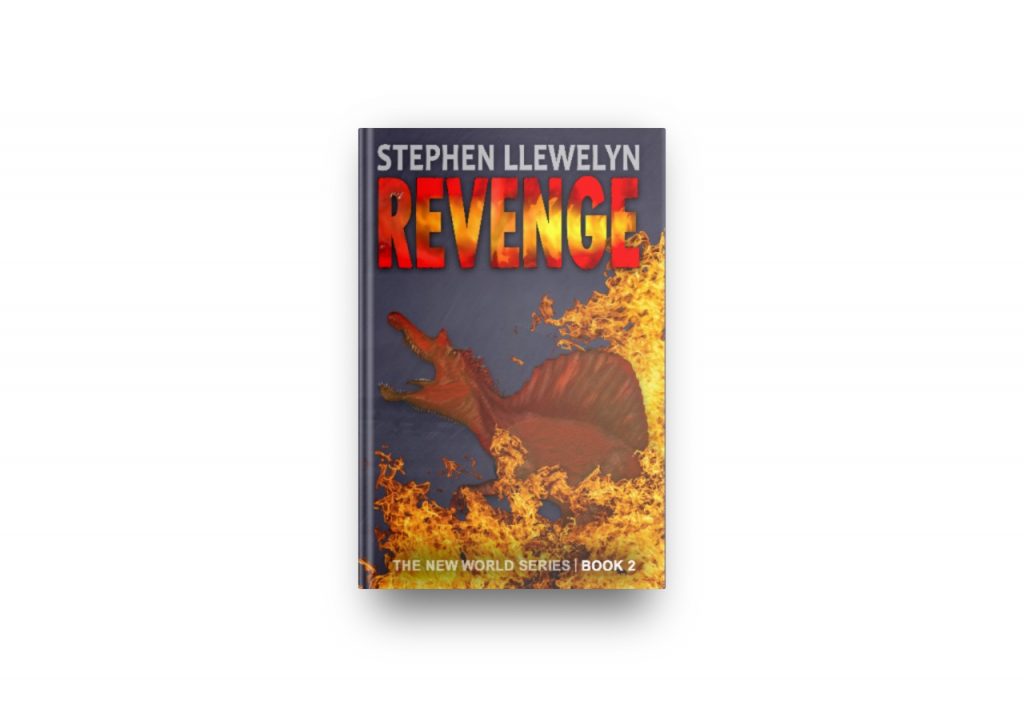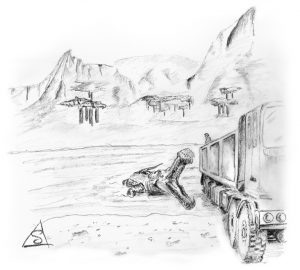a bit more about REVENGE
Author's Notes & Featured Creatures

ACKNOWLEDGEMENTS
As with the previous book, I thank everyone working in the field of dinosaur research (and Steve Brusatte for being kind enough to answer my emails and for giving me Buitreraptor as a suggestion).
These animals have always been a passion for me, and the experts continue to inspire me to write about them. Also as previously, a few liberties have been taken…
FIRSTLY, FEATHERS
There is a huge amount of effort going into researching this subject at the moment. It seems likely that many species had at least some form of feathers. Perhaps all dinosaurs did; the final answer seems to be up for grabs at the moment. Even the reasons for having feathers may have differed wildly between the species – maybe even between a species, at differing points throughout the animals’ lives (for example, the larger the animal, the less its requirement for insulation – in fact, above a certain size, overheating would be more likely).

Although I have introduced a few species with feathers, notably Buitreraptor, I have largely hedged around the subject for two reasons. Firstly, information on the subject is being gathered and is changing at a prodigious rate – and I did not want something so obvious as the look of the dinosaurs to become immediately out of date (this is a major problem faced by anyone writing about dinosaurs at the moment. Most books have to be updated three or four times just in the time it takes to write them!). Secondly, many people have a cherished view of what a dinosaur, particularly the larger and more popular clades, should look like.
In terms of the story, this does not really matter or affect events, and as this work is purely for entertainment, I leave the subject open and hope that each reader will enjoy ‘clothing’ these incredible animals in the way they prefer. Feathers or scales – please imagine them as you will.
TIMELINE

As previously stated in my notes at the back of book one, Buitreraptor lived a little later than the setting for these stories, perhaps in the Cenomanian or even Turonian stages of the Cretaceous Period.
There are few dromaeosaurids yet known in Patagonia during this period, so I chose this little animal rather than make one up. Tyrannotitan lived a little earlier than the setting for REVENGE, possibly in the Aptian stage of the Cretaceous Period.
I included this great animal for three reasons: Firstly, to give the great Mapusaurus and Giganotosaurus a rest after their exhausting efforts following the stampede in book one; animals that size would probably have hunted vast territories, perhaps even hundreds of square miles, so this would seem logical.
Secondly, there is no conclusive evidence, as far as I am aware, to categorically prove or disprove the group behaviour of the large theropod carnivores. It may be that they grouped together at certain times of year, or to bring down great prey, but were otherwise solitary; or they may have grouped together for mutual benefit when young, only to become more solitary when grown. Research continues and it is truly fascinating. With regards to my story, as the Mapusaurs and Giganotosaurs worked in packs (possibly due to a springtime breeding cycle), I thought it would be nice to describe another, similar animal with a lifestyle at the opposite end of the spectrum – a ‘lone wolf’, if you will.
Thirdly, I am a writer of stories, and with a name like Tyrannotitan, how could I possibly resist?

THANK YOU
Thank you so very much for reading,
Stephen



